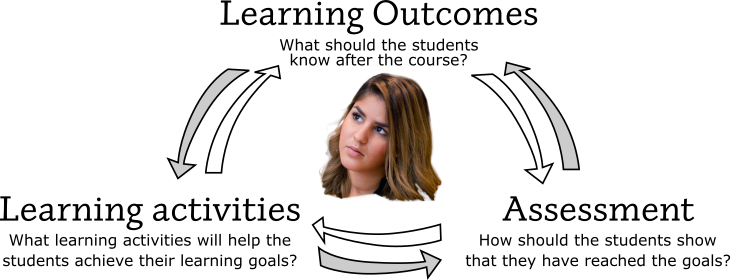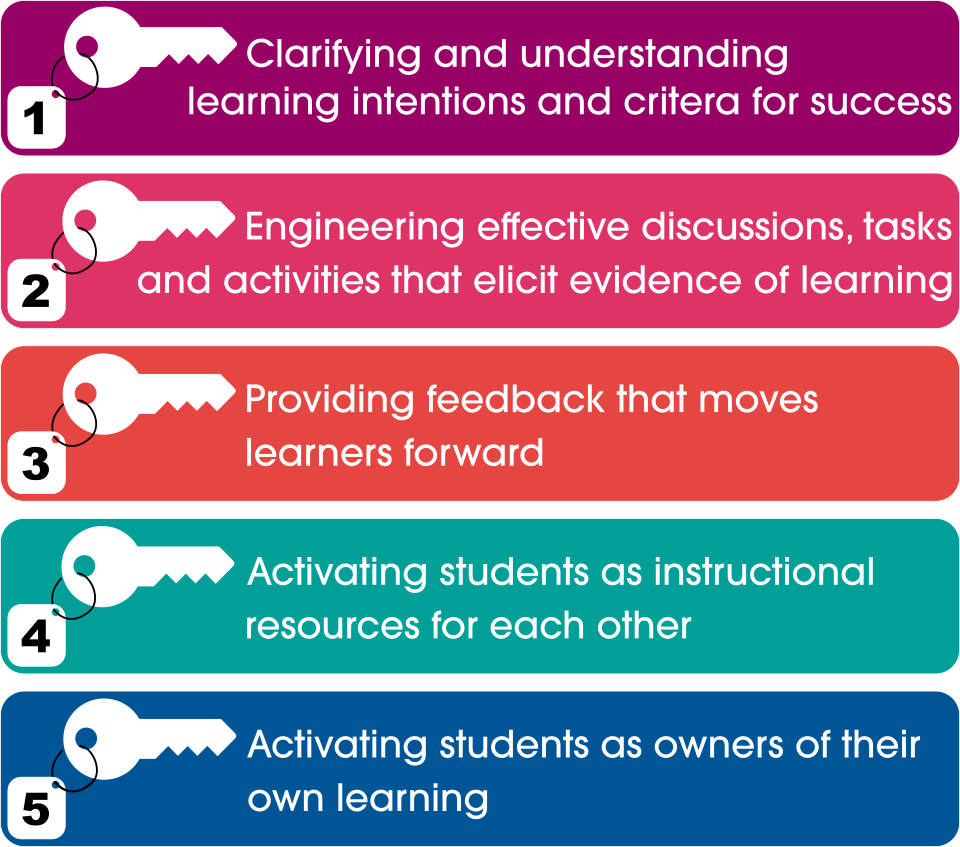Teaching
The purpose of teaching is to help students achieve the intended learning outcomes and examinations shall give students the opportunity to show that they have reached the intended learning outcomes.
You are always welcome to contact Lärum to discuss teaching and examination.
Constructive alignment
Constructive alignment is a term used to describe the link between learning outcomes, learning activities and examination. Working with constructive alignment implies that you work deliberately and systematically to plan learning activities based on how you can best help students reach the intended learning outcomes. In addition, examinations are drawn up in a deliberate and systematic way to allow students to show that they have achieved the intended learning outcomes.

Create learning activities
There are several learning activities which can help students to reach the intended learning outcomes. Based on the following:
- What should students learn?
- How should students learn this?
- When does it suit timewise?
- In what order should learning activities take place?
Watch the film about constructive alignment External link. (It was created by Karlstad University.)
External link. (It was created by Karlstad University.)
Create examinations
When creating any formats of examination, it is important to consider reliability and validity. Will it measure what we want it to measure and is it reliable? Perhaps we need to ask several questions and create opportunities during the examination for the student to demonstrate their knowledge in different ways and several times for each intended learning outcome.
When creating/designing the examination, we also need to think about how it should be assessed both at the question level and as a whole. Already when creating the examination, it needs to be clear how it should be assessed down to the individual question level. Ask a colleague to read through the examination.
Questions to ask when creating an examination:
- What intended learning outcomes should be examined and how?
- Do I have enough questions/tasks so that students have the opportunity to demonstrate their knowledge several times for the same learning outcome?
- Is the question/examination clearly limited towards the knowledge that will be tested?
- Is the examination clearly linked to the learning activities and content that the course has touched on based on the intended learning outcomes?
- How should the examination be assessed as a whole and at the question level?
- Are the questions posed in a way so that I won't get unexpected answers such as opinions that do not help me in my assessment? Can the question be interpreted in any other way than intended?
- Are the instructions clear and easy to understand?
- Are the students aware of how the examination will take place and on what basis their knowledge will be assessed?
Lärum can be a sounding board when querying and assessing different formats of examinations.
Formative way of working and summative assessment
For the students to learn, they need to know where they are on their way to achieving the intended learning outcomes, i.e., what should the student be able to do after the course, where is the student now and how should the student achieve the outcomes?
In formative assessment, there are five key strategies that support this. These are to clarify the intended learning outcomes, to highlight learning through learning activities based on the outcomes, pro-active feedback, use the students as a resource for one another, for example through peer feedback and that the students should be the owners of their own learning.
Summative assessment implies that we make a summary assessment of knowledge on a specific occasion. The purpose of summative assessment is to carry out a check precisely at that time and not to move the learning forward. However, the summative assessment can be used to create activities or feedback that can move learning forward.
Formative key strategies

More help in your teaching
Online tools
Lärum educates and supports teachers in the pedagogical use of Canvas, Zoom and MDH Play.
Accessible teaching
Lärum can arrange discussions with teachers about how to create accessibility during teaching.
Academic literacy
Lärum can work together with teachers to provide the best conditions for students.
Study techniques and generic skills
Lärum can arrange discussions with teachers about the development of students' study techniques.
Higher Education teaching and learning courses
Lärum's higher education teaching and learning courses are focused on teaching and examination based on various perspectives.
Inspiration days External link.
External link.
During Lärum's inspiration days, teachers present great examples from their own teaching and examinations.

Examine in compliance with the rule of law
Examining students is an aspect of our public service duty as a teacher. The Swedish Higher Education Authority (UKÄ) has developed guiding material with examples from the various higher education institutions. We want to ensure that we give the right person the right grade on a course and that the examination is carried out in a fair manner.
UKÄ: Rättssäker examination External link. (English summary
External link. (English summary External link.)
External link.)
